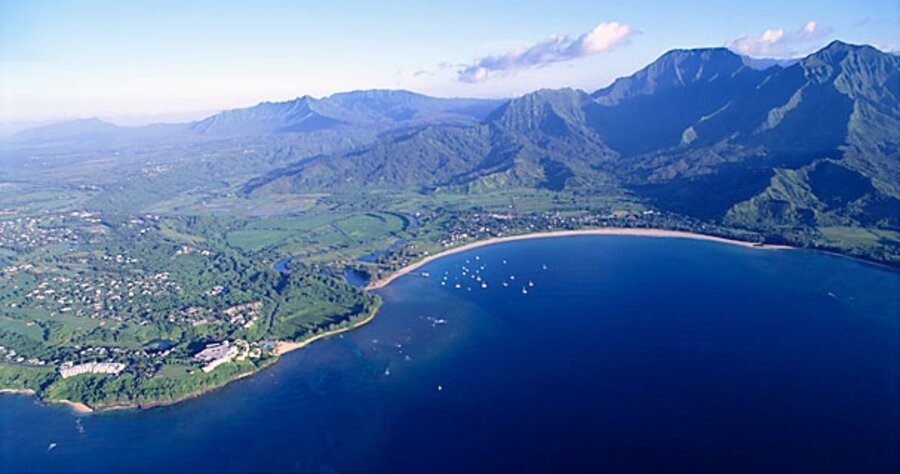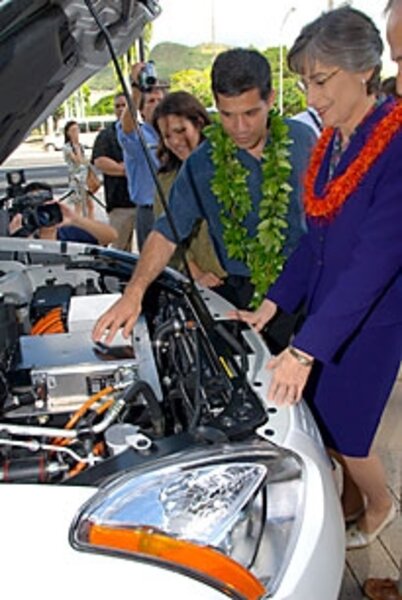Hawaii endorses ambitious electric car plan
Loading...
Hawaii's governor has announced plans to create an extensive electric-car-charging network by 2012, in an effort to wean the islands off of high-priced oil.
The plan, unveiled today by Republican governor Linda Lingle, calls for a public-private partnership with Better Place, a company that develops infrastructure to support electric vehicles. The Silicon Valley start-up, which made a similar deal with cities in California's San Francisco Bay Area last month, plans to install between 70,000 to 100,000 charging ports throughout Hawaii's four largest islands. Hawaiian Electric Companies, the state's largest utility, has agreed to collaborate with Better Place to develop the network.
Much of the electricity used to charge the vehicles is expected to come from renewable energy sources, according to Better Place CEO Shai Agassi. “Hawai‘i, with its ready access to renewable energy resources like solar, wind, wave and geothermal, is the ideal location to serve as a blue print for the rest of the U.S. in terms of reducing our dependence on foreign oil, growing our renewable energy portfolio and creating an infrastructure that will stabilize our economy,” said Mr. Agassi in a press release. “Hawai‘i has made the commitment to breaking its dependence on foreign oil, and is leading the way in addressing the most important economic and energy issues facing us today.”
Hawaii spends $7 billion on oil imports annually. The Wall Street Journal explains the scale of this burden:
Hawaiians pay high electricity prices because costly oil is burned to produce power. The price of electricity ranges from 24.9 cents per kilowatt hour on Oahu to 38.5 cents on Hawaii, the big island, compared with an average of 8.9 cents in the continental U.S. Such high prices should encourage the development of renewable energy. But there has been a big impediment: Electricity can't be moved among the six major islands, because there aren't adequate transmission lines.
That could be changing. There are now proposals to build large wind farms on Molokai and Lanai, and to turn those two islands, along with Maui, into a single grid, with the help of undersea cables. Surplus energy would be sent to Oahu, which consumes 80% of the state's electricity, on another undersea transmission line. These transmission upgrades could cost $750 million to $1 billion.
The island state is well-suited to electric vehicles, as drivers rarely travel more than 100 miles at a time, reducing the need for stations where depleted batteries are swapped for fresh ones. The New York Times notes that Better Place hopes to get started in such island economies (both literal and figurative) that have high energy costs and short trips, and then subsequently become more affordable as the charging networks are scaled up.
“We always knew Hawaii would be the perfect model,” Mr. Agassi told the Times. “The typical driving plan is low and leisurely, and people are smiling.”
In addition to partnering with Hawaii and Bay Area cities, Better Place has begun building stations in Denmark, Israel, and Australia.






